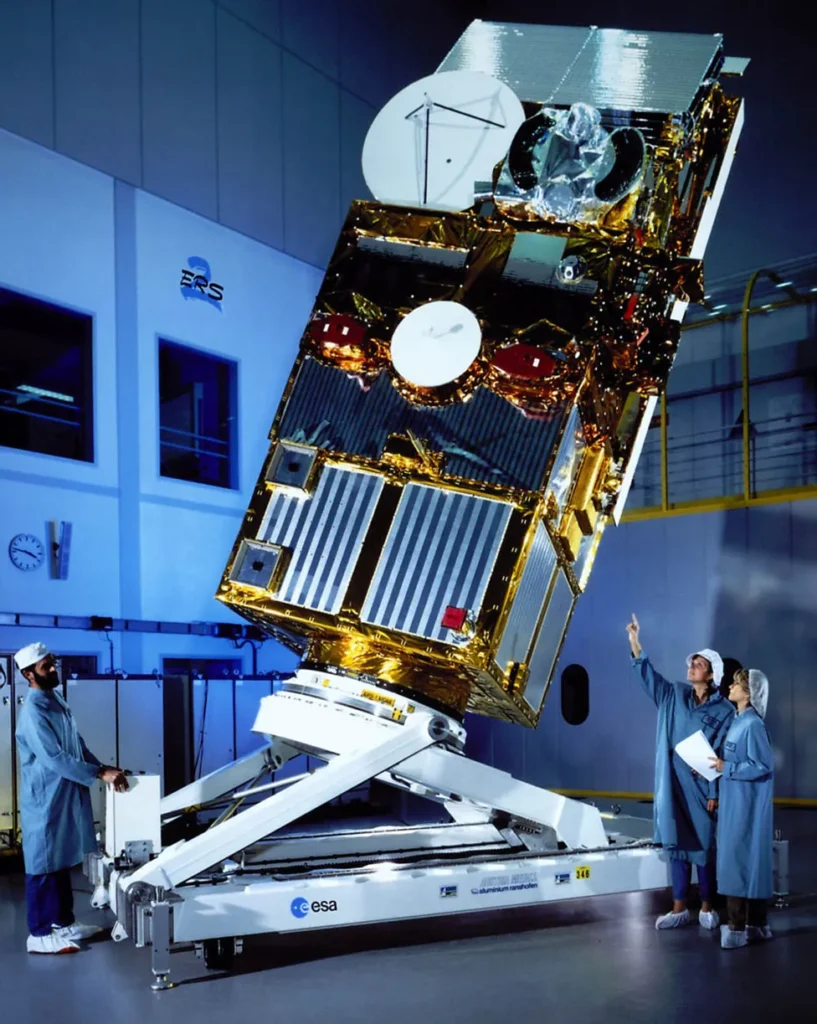Table of Contents

In the next several hours, a ground-breaking European spacecraft, ERS-2 (Grandfather satellite) is scheduled to crash onto Earth as space debris.
When ERS-2 was deployed in 1995, it was a state-of-the-art observation platform that pioneered technologies that are now routinely used to monitor Earth.
Since ceasing operations in 2011, it has been dropping steadily. Sometime on Wednesday, it will make an uncontrollably violent plummet into the sky.
The majority of the two-ton satellite, according to the European Space Agency (Esa), will burn up as it descends.
Although there’s a potential that some stronger sections would survive the extreme heat produced during the high-speed drop, there’s little probability that these pieces will strike inhabited regions and do harm.
They could land practically anywhere on Earth, but since the ocean covers the majority of the planet’s surface, any debris that makes it to the surface is probably lost at sea.
“And it’s worth underlining that none of those elements that might re-enter the atmosphere (and reach the surface) are hazardous or toxic,” said Mirko Albani of Esa’s Earth Observation Ground Segment Department.”
On Wednesday, people who have irrational concerns about uncommon but deadly events should be on high alert because there is a very slim chance that space trash may strike someone. Space junk is descending to Earth someplace.
It descends as fragments of the defunct European Space Agency satellite known as European Remote Sensing 2 (ERS-2). After being launched in 1995 and retiring in 2011, the satellite has been gently returning to Earth.
As of Tuesday afternoon, the European Space Agency (ESA) predicted that the defunct satellite will reenter Earth’s atmosphere on Wednesday around 11:32 a.m. ET, give or take four and a half hours.
This unpredictability is mostly caused by the effect of erratic solar activity, which modifies the Earth’s atmosphere’s density and, therefore, the drag that the satellite encounters.
According to the space agency, the satellite would fragment at a height of around 50 miles above Earth, with the bulk of its fragments combusting in the atmosphere. If any pieces get it to Earth, they will probably land in the ocean.

The heaviest piece of space debris ERS-2 that may touch down would be around 115 pounds.

Benjamin Bastida Virgili, an engineer for the ESA’s space debris system, stated during a press briefing last week that “the odds of a piece of satellite falling on someone’s head is estimated at one in a billion,” as reported by Phys.org.
According to Henri Laur of the ESA Earth observation mission, the biggest piece that would fall to Earth would be around 115 pounds, according to the website. The entire satellite weighs about 5,000 pounds.
The ERS-2 gathered data on Earth’s atmosphere and climate change over its 16-year lifespan. It employed “an imaging synthetic aperture radar, a radar altimeter and other powerful sensors to measure ocean-surface temperature and winds at sea,” according to the ESA, in addition to its elder sister satellite, ERS-1. To assess atmospheric ozone, the ERS-2 also carried an additional sensor.
According to the space agency, the two satellites gathered information on “shrinking polar ice, changing terrain, sea-level rise, rising ocean temperatures, and atmospheric chemistry.”
In 2011, the European Space Agency (ESA) deactivated ERS-2 and moved it from an orbit 490 miles above Earth to 360 miles above Earth. Both the gasoline and the batteries are now exhausted. The organization is unsure of its precise destination.
The intention was to progressively reduce it and keep it from contributing to the larger issue of orbiting space debris. According to NASA, there are around 100 million particles that are 1 mm or smaller, and there are about 500,000 marble-sized objects in orbit. Twenty-five thousand things are larger than 10 cm.
The majority of the debris is caused by collisions and explosions of satellites. Furthermore, smaller fragments of debris may be produced when items collide with one another. With an average impact speed of 22,000 mph, even little items can pose a threat.
According to the ESA, an object with an equivalent mass to the ERS-2 reenters Earth’s atmosphere once every one to two weeks on average.


